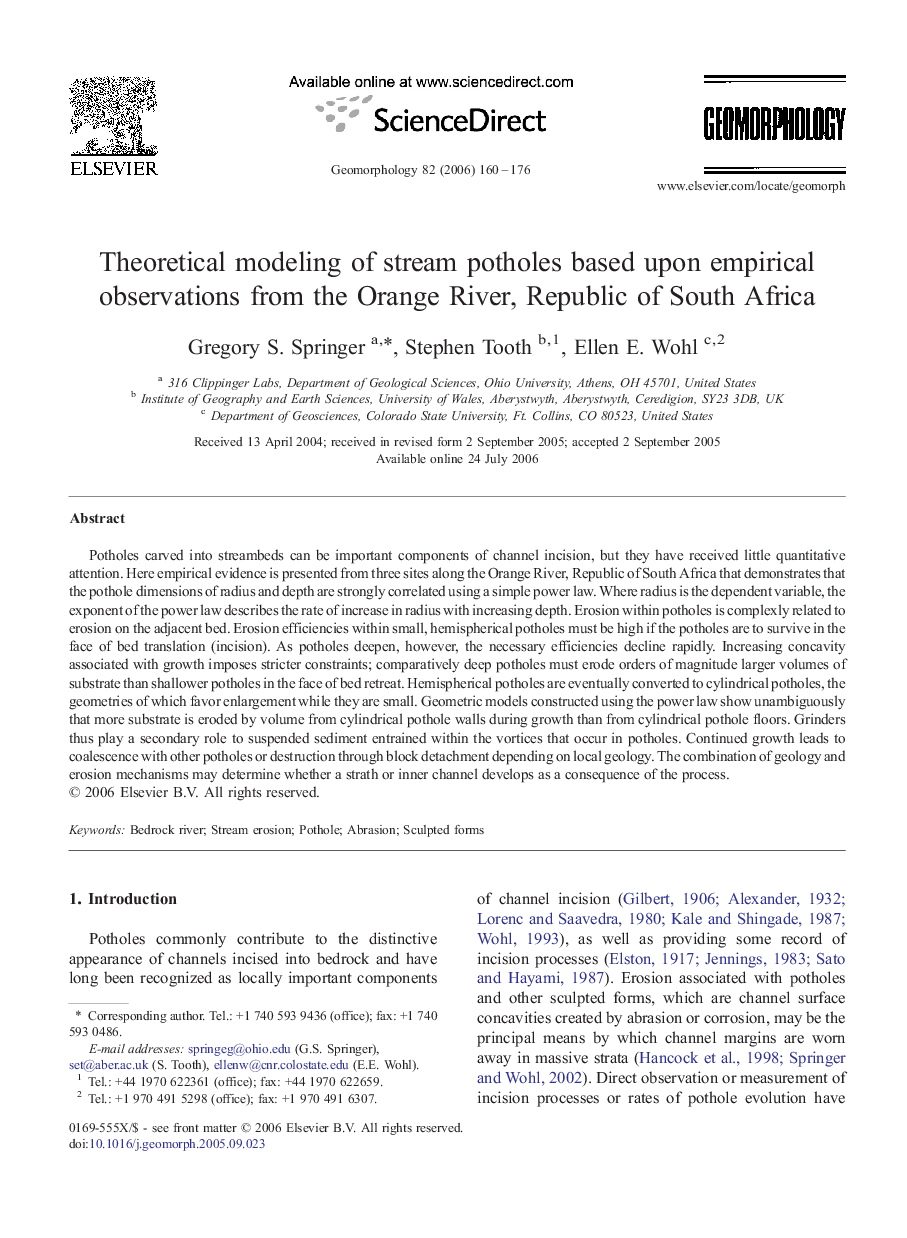| Article ID | Journal | Published Year | Pages | File Type |
|---|---|---|---|---|
| 4687336 | Geomorphology | 2006 | 17 Pages |
Abstract
Potholes carved into streambeds can be important components of channel incision, but they have received little quantitative attention. Here empirical evidence is presented from three sites along the Orange River, Republic of South Africa that demonstrates that the pothole dimensions of radius and depth are strongly correlated using a simple power law. Where radius is the dependent variable, the exponent of the power law describes the rate of increase in radius with increasing depth. Erosion within potholes is complexly related to erosion on the adjacent bed. Erosion efficiencies within small, hemispherical potholes must be high if the potholes are to survive in the face of bed translation (incision). As potholes deepen, however, the necessary efficiencies decline rapidly. Increasing concavity associated with growth imposes stricter constraints; comparatively deep potholes must erode orders of magnitude larger volumes of substrate than shallower potholes in the face of bed retreat. Hemispherical potholes are eventually converted to cylindrical potholes, the geometries of which favor enlargement while they are small. Geometric models constructed using the power law show unambiguously that more substrate is eroded by volume from cylindrical pothole walls during growth than from cylindrical pothole floors. Grinders thus play a secondary role to suspended sediment entrained within the vortices that occur in potholes. Continued growth leads to coalescence with other potholes or destruction through block detachment depending on local geology. The combination of geology and erosion mechanisms may determine whether a strath or inner channel develops as a consequence of the process.
Keywords
Related Topics
Physical Sciences and Engineering
Earth and Planetary Sciences
Earth-Surface Processes
Authors
Gregory S. Springer, Stephen Tooth, Ellen E. Wohl,
